Stanford Research
Showing all 7 results
-
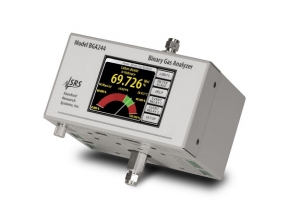
Stanford Research BGA244 Binary Gas Analyser
The Stanford Research BGA244 Binary Gas Analyzer quickly determines the ratio of gases and vapors in a binary mixture. It’s ideal for a host of applications including gas concentration monitoring, vapor concentration monitoring, binary gas blending, PSA (pressure swing adsorption), helium recovery, ozone purity, MOCVD gas monitoring, and general research where precise measurements of gas mixtures are necessary. The BGA244 operates without lasers, filaments, chemical sensors, optical sources, separation columns, reference gases, or reagents, and runs virtually maintenance-free.
- Gas Concentration Analyzer
- Vapor Concentration Monitor
- MOCVD concentration sensor
- Improvement to Thermoconductivity Analyzers
- Contains data for nearly 500 gases
- 0.01% typical concentration error
- USB, RS-232 & RS-422
-
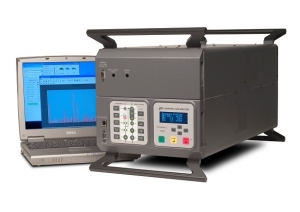
Stanford Research UGA Universal Gas Analyser Mass Spectrometer
The Stanford Research UGA and ULT Series Universal Gas Analyzers are state-of-the-art bench top Mass Spectrometers that operate from above atmospheric pressure to UHV. They are ideal for on-line monitoring and analysis of gas mixtures. Whether you’re measuring trace-level contaminants, solvents, hydrocarbons, refrigerants or corrosive gases, your Universal Gas analyzer is up to the task. UGA applications include semiconductor exhaust gas monitoring, glove box analysis, fuel cell studies, Freon detection, pollution monitoring, fermentation studies and general R&D vacuum analysis.
These analyzers are also simple to operate and maintain. The chassis design allows the instrument to be operated vertically or horizontally, and both front-panel and computer operation are supported. The ULT series is a simplified design for less demanding applications.
- 100, 200 or 300 amu systems
- Atmospheric pressure to UHV
- Fast response time
- Windows software
- Stand alone leak detection
- Electron multiplier
- Measure up to 100% H2 with UGA-Hydrogen (UGA w/opt. 3)
- Low cost solutions (ULT)
-
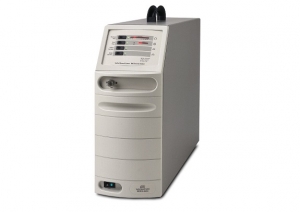
Stanford Research QMS Gas Analyser Mass Spectrometer
The Stanford Research QMS series Gas Analyzers offer an efficient, cost-effective solution for a wide range of applications. These Mass Spectrometers simplify the task of on-line process monitoring, analysis of gas species, leak detection, and troubleshooting. The QMS system can continuously sample gas at flow rates of several milliliters per minute. The inlet can be equipped to sample at pressures from 1 bar to 10 mbar. Data is acquired continuously, as opposed to batch sampling which is employed by gas chromatographs.
- 100, 200 or 300 amu systems
- Pressures from 10 mbar to 1 bar
- Better than 1 amu Resolution
- Less than 0.5 second Response Time
- 6 decades of Dynamic Range
- Compact, transportable design
- RGA Windows software
-
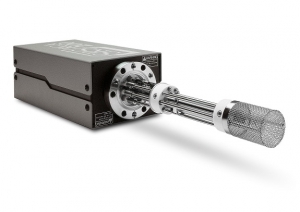
Stanford Research RGA Residual Gas Analyser
The Stanford Research 100, 200 and 300 amu Residual Gas Analyzers from SRS offer exceptional performance and value. These RGA’s provide detailed gas analysis of vacuum systems at about half the price of competitive models. Each RGA system comes complete with a quadrupole probe, electronics control unit (ECU), and a real-time Windows software package that is used for data acquisition and analysis, as well as probe control. The probe consists of an ionizer, quadrupole mass filter and a detector. The simple design has a small number of parts which minimizes outgassing and reduces the chances of introducing impurities into your vacuum system. The probe assembly is rugged and mounts onto a standard 2 ¾ inch CF flange. It is covered with a stainless steel tube with the exception of the ionizer which requires just 2 ½ inches of clearance in your vacuum system—about that of a standard ion gauge. The probe is designed using self-aligning parts so it can easily be reassembled after cleaning.
- 100, 200 or 300 amu systems
- Better than 1 amu resolution
- 6 orders of magnitude Dynamic Range in a single scan
- 5 × 10?14 Torr detection limit
- Field-replaceable electron multiplier and filament
- RGA Windows & LabVIEW software
- RS-232 and Ethernet interfaces
-
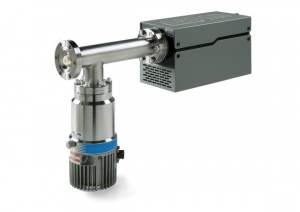
Stanford Research CIS Closed Ion Source Gas Analyser Mass Spectrometer
The Stanford Research CIS Closed Ion Source offers better than 1 ppm detection limit, direct sampling at mTorr pressure, and a user-friendly Windows software package and will satisfy your most demanding applications. On-line process monitoring and control, verification of process gas purity at the point of use, high-vacuum residual gas analysis, and process equipment leak checking are some of the areas where these systems will prove indispensable. The probe consists of a quadrupole mass spectrometer with a CIS ionizer mounted inside a 2.75″ Conflat® Tee. The control unit mounts directly on the probe’s feedthrough flange and contains all the necessary electronics for operating the instrument. The side port of the CIS nipple provides a connection for the differential pumping system that keeps the quadrupole, filament and detector at high vacuum. The system can be connected directly to a process chamber through its standard CIS mounting flange (2.75″ CF). The unit is self-aligning, with a simple, robust design. You can clean and reassemble the probe, and replace the filament and electron multiplier in the field, without ever calling the factory.
- 100, 200 or 300 amu systems
- 1 ppm Detection
- 10 mTorr max. operating pressure
- 1 × 10?12 Torr detection limit
- Multi-head operation
- Field-replaceable electron multiplier and filament
- RGA & CIS Windows software
-
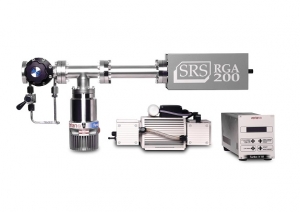
Stanford Research PPR Vacuum Process Monitor
The Stanford Research PPR Process Monitoring System is designed for in-line process monitoring and diagnosis. Two paths are provided to the residual gas analyzer (RGA): a high conductivity path for monitoring base vacuum, and a pressure reducing path for monitoring the process at operating pressure. The pressure reducing path contains a micro-hole orifice which is designed to operate at one of the following pressures: 0.01, 0.1, 1 or 10 Torr. It reduces the sample pressure to the operating pressure of the RGA (about 10-6 Torr). This pressure drop is maintained by the pumping system which consists of a hybrid turbomolecular pump and a diaphragm pump. Both pumps are oil free and will not contaminate your process.
The inlet assembly that attaches to your process chamber can be configured in several ways (see drawings). The system includes an RGA, by-pass valve assembly and Tee, a controller, turbo pump, diaphragm pump, and Windows software program for data acquisition and control.
The software is used to operate the instrument in various modes, including analog scan, histogram mode, and pressure vs. time mode. Both Faraday cup and electron multiplier detectors are standard with the PPR system. The electron multiplier provides additional sensitivity and higher scan speeds. The PPR system is shipped completely assembled and calibrated, and is ready to attach to your vacuum process chamber.
- 0.01, 0.1, 1.0 or 10 Torr inlet pressure
- 3 × 10?5 Torr-L/s Flow Rate
- 2 second Response Time (0.1 Torr)
- 100, 200 or 300 amu systems
- 6 orders of magnitude Dynamic Range in a single scan
- Field-replaceable electron multiplier and filament
- RGA Windows Software
- RS-232 and Ethernet interfaces
-
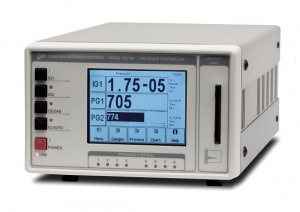
Stanford Research IGC Ion Gas Controller
The Stanford Research IGC100 is a High-Accuracy Vacuum Gauge Controller that offers pressure measurement and process automation never before available in a single instrument. It measures pressure from Bayard-Alpert ionization gauges, convection-enhanced Pirani gauges, and capacitance manometers providing uninterrupted pressure readings from 1000 Torr to UHV. The IGC100 has a touchscreen display that can present data in a variety of formats including pressure versus time curves. There are built-in relays for process control, and several multipurpose input/output ports. The IGC100 is also fully web-ready. Now you can monitor and control your vacuum system from the lab, your home, or anywhere in the world. The IGC100 is designed to be a highly accurate, stable controller. Its low noise, auto-ranging electrometer delivers high accuracy pressure readings into the UHV range. A low-noise, direct current (DC) supply powers the filament and establishes the emission current. The IGC100’s precision electronics eliminate controller-to-controller variations and the measurement uncertainties (up to 15 %) associated with traditional instruments.
- 1000 Torr to UHV range
- Highly accurate & stable
- Pressure vs. Time curves
- 4 analog Input/Output ports
- 8-channel Process Control
- GPIB and Web interfaces
